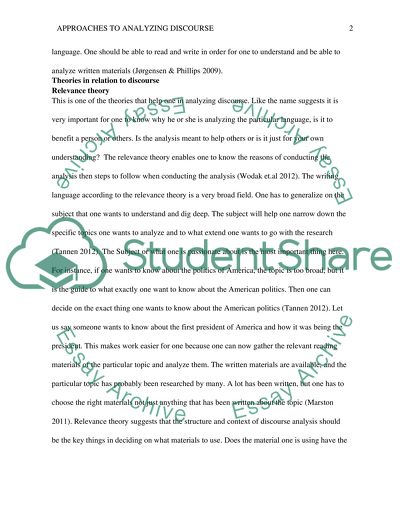Cite this document
(“Approaches to analysing discourse Essay Example | Topics and Well Written Essays - 3250 words”, n.d.)
Approaches to analysing discourse Essay Example | Topics and Well Written Essays - 3250 words. Retrieved from https://studentshare.org/english/1613500-approaches-to-analysing-discourse
Approaches to analysing discourse Essay Example | Topics and Well Written Essays - 3250 words. Retrieved from https://studentshare.org/english/1613500-approaches-to-analysing-discourse
(Approaches to Analysing Discourse Essay Example | Topics and Well Written Essays - 3250 Words)
Approaches to Analysing Discourse Essay Example | Topics and Well Written Essays - 3250 Words. https://studentshare.org/english/1613500-approaches-to-analysing-discourse.
Approaches to Analysing Discourse Essay Example | Topics and Well Written Essays - 3250 Words. https://studentshare.org/english/1613500-approaches-to-analysing-discourse.
“Approaches to Analysing Discourse Essay Example | Topics and Well Written Essays - 3250 Words”, n.d. https://studentshare.org/english/1613500-approaches-to-analysing-discourse.


